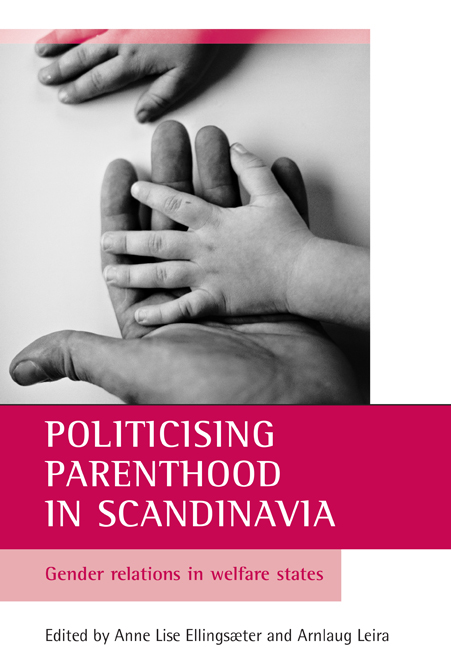Book contents
- Frontmatter
- Contents
- List of boxes, figures and tables
- Acknowledgements
- List of contributors
- one Introduction: politicising parenthood in Scandinavia
- Part One Politicising parenthood – legacies and challenges
- Part Two Gender equality and parental choice in welfare state redesign
- Part Three Work, family and the welfare state: redefining family models
- Index
seven - Parental choice and the passion for equality in Finland
Published online by Cambridge University Press: 15 January 2022
- Frontmatter
- Contents
- List of boxes, figures and tables
- Acknowledgements
- List of contributors
- one Introduction: politicising parenthood in Scandinavia
- Part One Politicising parenthood – legacies and challenges
- Part Two Gender equality and parental choice in welfare state redesign
- Part Three Work, family and the welfare state: redefining family models
- Index
Summary
Introduction
In international comparison, Finland is a country with well-developed policies providing support to parents who combine employment and family. This active parenthood policy has been seen as an indicator of a strong equality policy (for example, den Dulk et al, 1999) but the achievements of that policy have also been problematised (for example, Rantalaiho and Heiskanen, 1997) and even questioned as a turn to neofamilialism (Mahon, 2002). This chapter examines recent developments in Finnish policies of parenthood. How do the rationales behind parenthood policies change? How do the policy schemes meet the challenge of gender equality? Whose voice is heard when policy reforms are made? The reforms and the rationales behind them are also related to the changes in working life and the goals of present-day European politics. How do ambitions to create good policies for parents and children fit into the demands of working life and the challenges of a changing population structure?
A survey of Finnish families provides data on parents’ response to the reforms. In the survey, mothers and fathers of children born in 1999 answered questions concerning their practices, wishes and opinions on how to take care of young children as well as on their experiences from the workplace when taking family leave and returning from the leave. The data were collected in 2001/02 from 3,295 mothers and 1,413 fathers. As the female and male respondents do not come from the same families, the data give a picture of practices and opinions in almost 5,000 Finnish families with young children.
I will focus particularly on two topics: first, the parents’ views on the arrangement of parental leave and how it should be shared between the parents, and second, the issue of parents’ choice of day care or a cash grant for care. I will discuss the parents’ views in relation to the rationales of the childcare reforms and the views expressed in the debate on these reforms by policy makers. I will also ask to what extent decisions on policy measures, on the one hand, and the ‘choices’ women make, on the other hand, can be explained by trends of re- or defamilisation, and to what extent they reflect the rather harsh development of the Western market economies, where the logic and ethos of the market seem to penetrate all areas of society (see Jacobs, 1992; Sauli et al, 2004).
- Type
- Chapter
- Information
- Politicising Parenthood in ScandinaviaGender Relations in Welfare States, pp. 145 - 168Publisher: Bristol University PressPrint publication year: 2006



